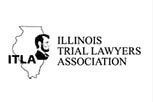Is drowsy driving just as dangerous as drunk driving?

While the dangers of drunk driving are generally well documented, less is known about the prevalence and repercussions of drowsy driving. The Centers for Disease Control and Prevention assert that fatigued driving not only makes drivers less attentive, but that it also slows reaction time and negatively impacts decision-making.
The National Highway Safety Administration reports that drowsy driving is a factor in more than 100,000 car accidents annually. With more than 100 automotive fatalities having occurred on Illinois roadways already this year, stopping preventable driving behaviors like fatigued or drunk driving is a matter of public safety.
Drunk driving, by the numbers
The NHTSA conducted a National Roadside Survey in 2013 and 2014 about alcohol use by motorists, and the results are encouraging. The overall percentage of drivers with a measurable amount of alcohol in their systems was about 8 percent, indicating an almost 30 percent drop between 2007 and 2014. Furthermore, since the time that the same study was initially conducted in 1973, the number of drivers with measurable amounts of alcohol in their systems fell by almost 80 percent. While these figures are promising, a car accident attorney in Chicago would be interested in how they compare to drowsy driving statistics.
Drowsy driving, by the numbers
Although decades of research exists about drunk driving and its associated risks, ABC News reports that the National Transportation Safety Board held its first-ever drowsy driving forum in late 2014. The overall takeaway was that Americans need to “wake up” when it comes to this growing problem, and additional evidence exists to back up its claim. The NHTSA estimates that although it can be difficult to firmly attribute a crash to driving while fatigued, the behavior factored into about 2.5 percent of all automotive fatalities and about 2 percent of injury crashes. They also note, and a car accident attorney in Chicago would likely agree, that these are probably conservative numbers.
Similarities between driving drunk and driving drowsy
Many people don’t realize that driving while fatigued and driving while drunk impair motorists in similar ways. The frightening numbers recently released regarding drowsy driving are of concern for everyone traveling America’s roadways. The CDC asserts that driving after being awake for 18 consecutive hours impairs the driver as much as a blood alcohol level of 0.05 percent. After 24 hours, that number grows to 0.10 percent, which a car accident attorney in Chicago knows is higher than the legal limit in all 50 states.




